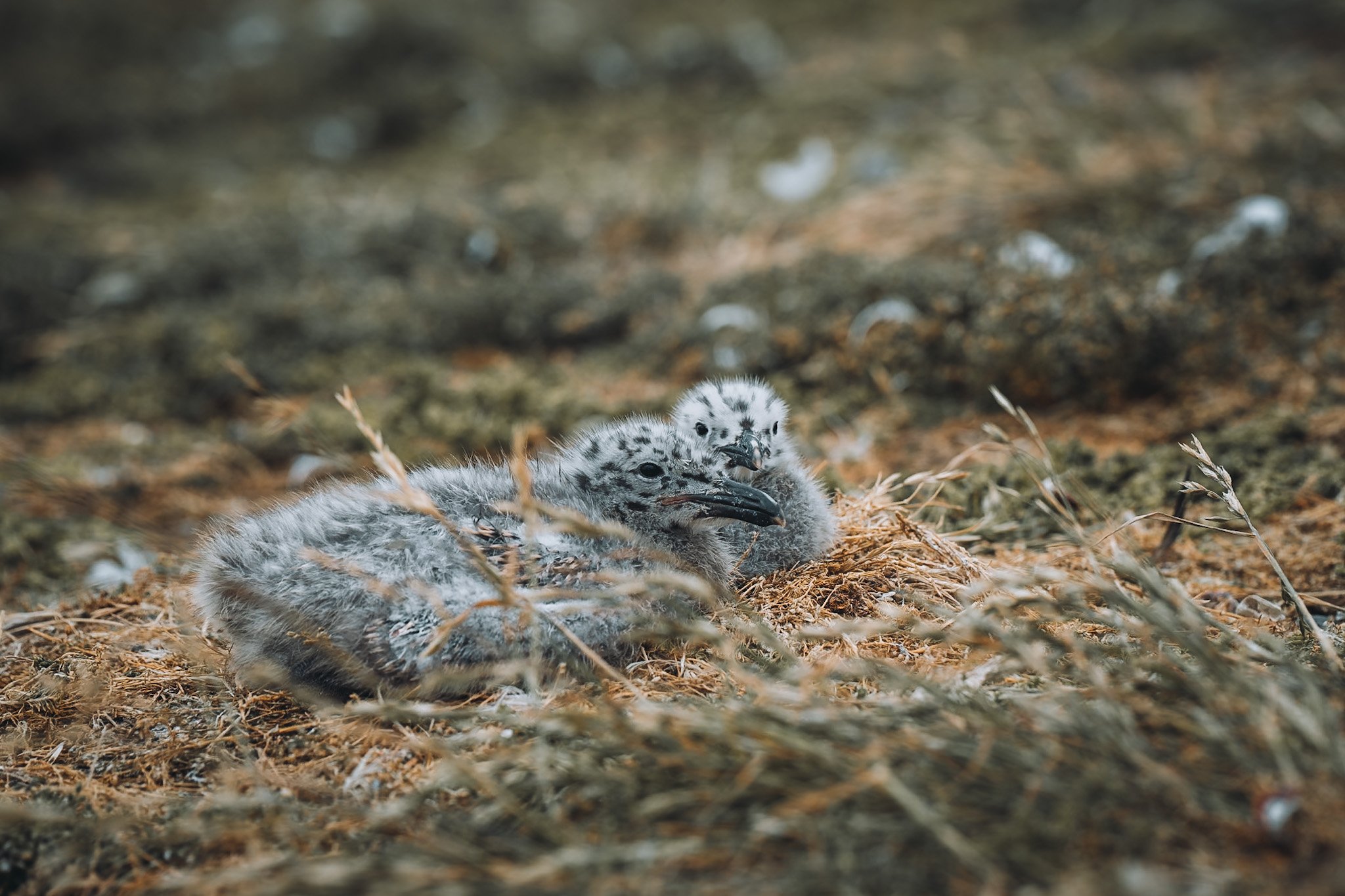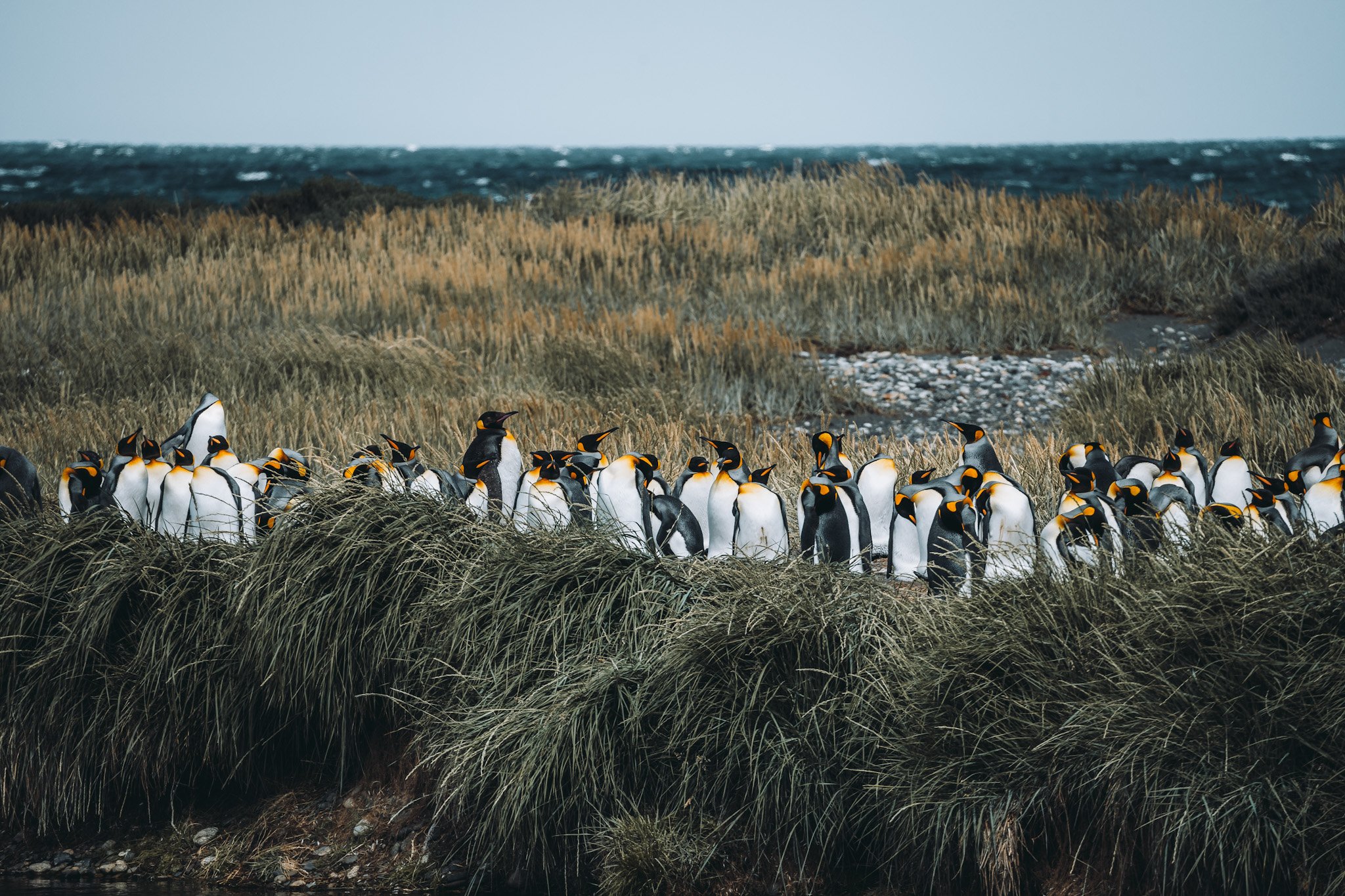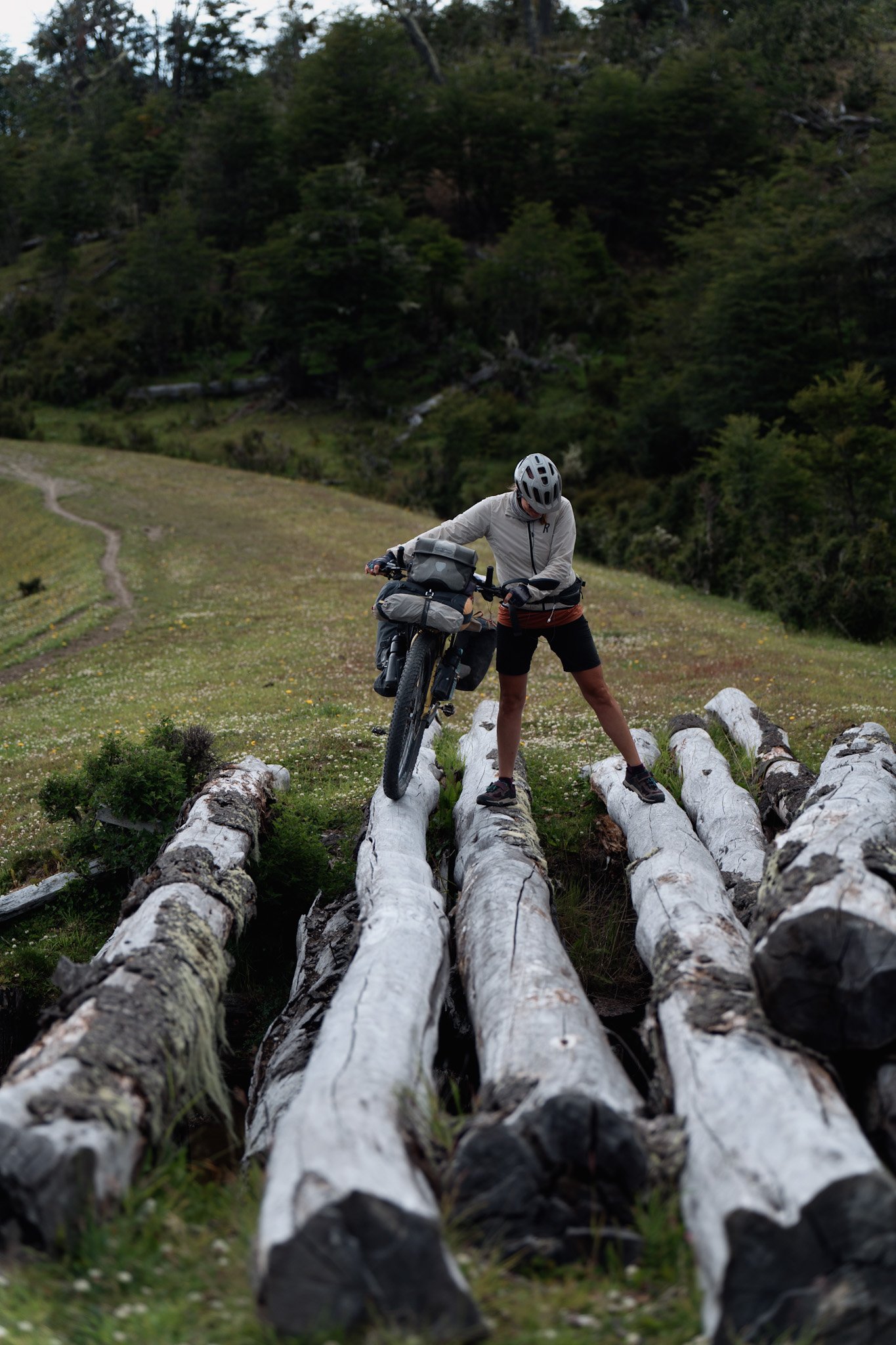Tierra del Fuego
This year Christmas feels like being in Germany - it is wet, cold and rainy.
Near Puerto Natales is the Cueva del Milodón. It is a 200 m long cave and was named after the extinct Mylodon (giant sloth), which was discovered in the cave in 1895.
On the first stage to Punta Arenas, we were able to observe many Nandus in the pampa and also take a long waited portrait.
After the female has laid the eggs, the breeding business and the child-rearing is entirely the responsibility of the male. We were able to count 24 little ones from one nest.
The Nandus often form herds together with guanacos. They are a little larger than vicuñas and have a very striking black face.
In the pampas there are a lot of abandoned houses that have often been converted into a Casa de Ciclista (bicycle hotel). We see the tags of some fellow travelers.
Along the coast we see a couple of black-necked swans transporting their chicks on their backs - very caring. A Magellan goose also showed its beautiful plumage.
We still haven't seen a Condor and that has to change. We research where we have the best chance and look for the most pooped cliff along our route. On the next section, 50% of all Condors of Chile will live here. Hopefully we'll see one there.
In the afternoon we see the first scavenger gliding from the forage in the direction of the slope. They are really huge and cast a shadow like Toruk Makto. Unfortunately, they were too far away for a close-up, but it was very impressive to see them. We learned from our friend Tjorge (8) from Uelzen that this is one of the largest birds in the world.
As relaxed as the Condors sail around side by side, the more the balck-chested buzzard-eagle fight like Streetfighters.
We come to Punta Arenas and cycle directly into the port. From here you can take a day trip to the island "Isla Magdalena". If you want to watch the Magellan penguin nesting, this is the place. 120,000 penguins are at home on the small island from October to March.
After an intensive briefing we were allowed to walk around the island. The number of visitors is kept very manageable. The rangers were pretty strict.
The penguins were partly very interested and as clumsy as they are there was always something to laugh about.
Some males try to show off and show their chicken breast.
The offspring is very lovingly taken care of. The little ones look like a teddy - very fluffy.
The parents even chew food for their littles. Within a radius of 30 kilometers around the island, fishing is strictly prohibited in order to disturb the habitat as little as possible.
On the other side of the island there are also many seagulls. They know each other here.
The breeding couples do not have it easy on Isla Magdalena. Where so much vulnerable lives, the predators are not far away.
It was a really great experience to see the penguins so close and after an hour the rangers pushed us back to the ship.
We spend New Year's Eve in Punta Arenas, camping in the garden of a hostel. There were no fireworks at midnight, only the house cat Matilda probably had a glass too much and stumbled over our tent.
One last time on this journey we go on the ferry. We cross the Magellan Strait to Tierra del Fuego. "Land of fire", this is how the Portuguese navigator Fernando Magellan called the region in 1520 when he saw many fires of the local indigenous people along the coast. He had been sent to this region on behalf of the Spanish crown to find a western route to the Spice Islands. The Magellan Strait was used as a shortcut from the Atlantic to the Pacific Ocean before the completion of the Panama Canal.
It is quite windy and we are happy to find shelter in a Refugio in the evening. From the window we can observe some guanacos and a fox in search of food.
In 2010, a small group of king penguine landed in the bay "Bahía Inútil". Since then they have been multiplying steadily and currently there are ~150 animals. The colony of Rey is the only one in the world that lives on the mainland, usually they only live in Antarctica and on islands. The area around the approximately 1 m high penguins is secured like a prison and only 20 people per hour are allowed to go to the observation points. Thanks to the large zoom lens, we are very happy with the photos.
The last border crossing takes us from Chile back to Argentina. It is very windy again in the evening and so we can set up our camp in the waiting area of the border post.
On this trip we saw the sea to the east only twice. In Belize in the Caribbean and now on the last few days the Atlantic near the city of Rio Grande. A monument has already been built for Felix down here.
The national drink of the Chileans and Argentines is the mate tea. It is a very highly caffeinated drink with a herbal mixture being infused with hot or cold water, depending on the region. There is a filter at the lower end of the metal straw. You always prepare it yourself with your own cup and your thermos and you can hardly get it anywhere in restaurants or in a café. At a campsite we get to know the Argentine Juan and get a briefing. Very important, the straw is never touched.
The landscape on the last stages are really pretty again.
We come across a cycling tour group, led by Nacho. He has also rode countless kilometers around the globe and also tests himself again and again in long distance races. We all got along great and in the next village we were invited to BBQ. We had a great time with this troop.
In the next few days we found diverse accommodations. Be it in the basement of a bakery between chocolates and flour bags,
or in a bungalow of an abandoned hotel from where we can observe a couple of great grebes.
We often see beaver buildings. The beaver was brought by humans in the past and has unfortunately multiplied so much in the region that it has become a major problem for the local flora and fauna today.
We leave the pampas. The last two days to Ushuaia became really green and also exciting again - the "goal" is within reach.
On this trip we made an effort to document our impressions and experiences as well as possible. For the very last stage to the sign "Fin del Mundo" (The End of the World) this is not so easy at all. You feel chicken skin all day long. When a car honks or someone applauds on the side of the road, tears shoot down your face. After 20,700 kilometers through 15 countries and over a quarter of a million meters of altitude, seeing the sign overwhelmed us.
Due to the strong tailwind, we were a little faster than expected at the destination of our trip. So we still had a few days until our booked flight. Although you can do a lot in the mountains around Ushuaia and on the Beagle Channel, but we didn’t do much except for having healthy food and to organize two bike boxes. And we also had something to clarify!
We are so incredibly satisfied with what we were allowed to experience on this trip. We are doing really well and we are now very much looking forward to family, friends and of course the Samerberg - life is good!

































































































































